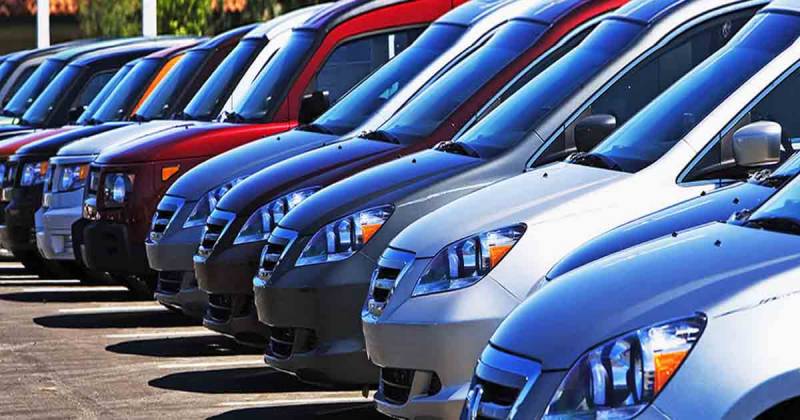Engineering Post Report
Despite the persistent negative impact of pandemic of COVID-19 closure and lockdowns, the industrial production of the automobile sector had shown positive trend in all segments till sometime back during July-April FY2021. However, for the second consecutive year, the production figures have remained relatively somewhat depressed inter-alia, due to new taxes like Federal Excise Duty (FED), Additional Custom Duty (ACD), minimum value addition taxes that were imposed during FY2019. These policy measures coupled with pandemic continued to grip the industry with somewhat with a state of uncertainty.
Auto industry lost its momentum in FY2020 and nosedived to half of its size due to contractionary policies combined with escalating exchange rate. There was no respite during the FY2021 also as COVID-19 related closures dented the industry. However, resumption in business activities and accommodative fiscal/monetary policies improved the scenario.
The period July-April FY2021, as per available information from the quarters concerned, has witnessed growth as compared to the previous period. The path of recovery hopefully continued during the last financial year on revival of economic activity and low interest rates led by introduction of new car models and showing up of the latent demand. Market expansion was already taking place due to the confidence build up by the existing players as well as by the new entrants. The federal government had till sometime back granted Greenfield status licenses to 21 new investors and approximately US $ 475 million actualized as six new manufacturing units had already commenced their operations. Therefore, all projections have casted a positive outlook for the industry.
In case of passenger cars, the production and size were up by 36.4 per cent and 48.5 per cent with 120855 units and 126679 units respectively as against 88628 units and 85330 united produced and sold during the previous year. This recovery had stemmed from the latent demand that had gathered on account of dampened numbers earlier on. For similar reasons, the production and the sales of light commercial vehicles (LCV) also registered increase by 45.9 and 57.5 per cent respectively. Further, phenomenal increase of numbers in case of Jeeps was due to pleasant entry of Hyundai with significantly happy production and sales numbers. As more new investors would be joining, SUV 4×4 and 4×2 segment was most likely to expand significantly in time.
Heavy Commercial Vehicles (HCV such as trucks and buses) production and sale also had increased by 2.8 and 7.4 per cent respectively. In case of buses, production increased by 4.3 per cent with 482 unites produced while trucks production jumped by 2.6 per cent with 2802 units produced. During the last year, a major HCV unit had faced some technical issues which caused relatively low growth than other segments.
Farm tractor can also be seen on the path of revival with production and the sales up by 65.2 and 62.2 per cent respectively. The sales during the period under report July-April FY2021 were 41456 units against 25562 units during the previous year. This pleasant upward surge was mainly due to ample support prices to the farmers and the policy of revival of the construction sector. However, these numbers were still not even close to the highest numbers this industry had achieved in the past which indicated there is still ample room for further growth.
The two/three wheelers sector has also showed satisfactory recovery with production and the sales up by 33.5 and 34.0 per cent respectively. Two/three wheelers offer most economical public transport alternate for the lower income group, however, at the same time, it was also extremely price sensitive. Massive exchange rate losses kicked off inflationary conditions resulting inevitable price increase. It may also be mentioned here that there has been steady growth in the two/three wheelers for the potential they have, however, it had succumbed to the adverse macroeconomic happening during the previous year. Still this sector offers most preferred means of transport and the best alternative in the absence of public transport in the absence of public transport in the cities and thus holds a dependable and continued positive potential for growth in the coming years.
The auto sector constitutes about 7 per cent to Large Scale Manufacturing (LSM), which accounts for the significant industrial output of the country. According to the information gathered from the Pakistan Bureau of Statistics (PBS), automobile sector had recorded 23.4 per cent surge during July-March FY2021. However, these numbers, to a great extent, fall short of installed capacities, accordingly, there would be inevitable proportionate cost push of products in the wake of idle capacities. Given the government support, removal of irritants was soon going to bear fruits in the wake of industrial expansion as many new investors have since joined with commercial production while the existing players have also already made huge investments and a lot more was in the waiting. These investments by the new and the existing players are a testimony to confidence in our market, at home and abroad. Given the macroeconomic stability in the country and the extraneous factors not going out of hand, latent demand would burst out and expansion of industry is sure to take place, the sources maintained.
According to information gathered from Pakistan Automotive Manufacturer Association (PAMA), installed capacity of category CAR is 341000 units, LCV 44000 units, JEEP 5000 units, BUS 5000 units, TRUCK 28500 units, TRACTOR 100000 units and 2/3 WHEELERS 2500000 units in the country.






